Dryer Master real time moisture monitoring and moisture control technologies are utilized in a considerable range of applications. Our customers tell us that they see real bottom line results from being able to master their moisture.
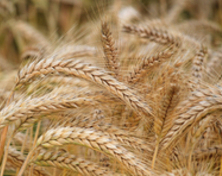 Dryer Master developed its DM510 grain drying control system specifically to deal with the difficult control challenges presented by the outdoor drying of grain. Two real time moisture sensors continuously monitor incoming and outgoing grain moisture and feed this critical information to the DM510 controller. The controller builds a model of how efficiently the dryer is drying at any point in time, and updates the model based on actual drying results. It uses the model to calculate the optimal discharge rate to use, given the current grain in the dryer, to achieve the operator’s moisture setpoint. As drying conditions change, or incoming moistures fluctuate, the controller updates its model and adjusts the discharge rate to compensate for these changes.
Dryer Master developed its DM510 grain drying control system specifically to deal with the difficult control challenges presented by the outdoor drying of grain. Two real time moisture sensors continuously monitor incoming and outgoing grain moisture and feed this critical information to the DM510 controller. The controller builds a model of how efficiently the dryer is drying at any point in time, and updates the model based on actual drying results. It uses the model to calculate the optimal discharge rate to use, given the current grain in the dryer, to achieve the operator’s moisture setpoint. As drying conditions change, or incoming moistures fluctuate, the controller updates its model and adjusts the discharge rate to compensate for these changes.
The bottom line is less over drying (shrinkage), improved throughput, reduced energy consumption, and peace of mind knowing that even in the heat of the drying season the drying process is being carefully watched over.
DM Mobile, Dryer Master’s remote access platform comes standard with the DM510. With DM mobile you can monitor and make changes to your drying from your phone, tablet or PC.
The DM510 can be configured for the drying of up to 8 products including corn, wheat, soybeans and canola.
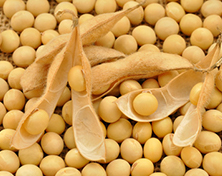 Dryer Master's stainless steel food grade moisture sensors are built tough and are designed to be able to be integrated into the production process either at the end of the DTDC (in a solvent extraction process) or in the cooling process (in a press process). The sensors can be installed and connected directly into a plant wide automation system, or alternatively connected to a dedicated Dryer Master supplied GM2/M2 display panel.
Dryer Master's stainless steel food grade moisture sensors are built tough and are designed to be able to be integrated into the production process either at the end of the DTDC (in a solvent extraction process) or in the cooling process (in a press process). The sensors can be installed and connected directly into a plant wide automation system, or alternatively connected to a dedicated Dryer Master supplied GM2/M2 display panel.
The moisture sensors provide real-time moisture information to the operators giving them a more accurate and timely view of the process and allowing them to identify any issues that may arise more quickly. Once installed the sensors can also significantly reduce the time and effort needed to take manual samples, thereby freeing up valuable operator resources.
Since soybean processing plants run year-round, processing a far larger volume of product than would a standard grain drying facility, Dryer Master moisture sensors can be added at a very cost-effective price on a cost per volume processed basis.
 The same moisture measurement technology that allows grain dryer operators to monitor product moisture in real time is also available to Ethanol Facilities to use at multiple locations in their facilities, whether on corn kernels before the hammermill or on DDGS at the end.
The same moisture measurement technology that allows grain dryer operators to monitor product moisture in real time is also available to Ethanol Facilities to use at multiple locations in their facilities, whether on corn kernels before the hammermill or on DDGS at the end.
Dryer Master provided an initial GM2 moisture monitoring system to an Ethanol Facility. They were interested in measuring, in real time, the moisture of corn entering their hammer mills. The real time moisture readings provided the facility with expanded process monitoring capabilities and more consistent milling results. The moisture information obtained proved sufficiently valuable that they subsequently added several additional sensors.
The moisture sensors in this example were initially purchased as part of a GM2 moisture monitoring system complete with a display station. The subsequent units were connected directly to the PLC based plant wide monitoring and control system.
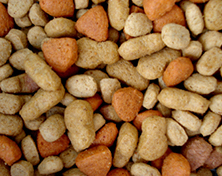 Pet food plants generally produce multiple products. The number of products can run into the hundreds, each with their own recipe and process settings for temperatures and belt speeds. This makes for a complex operation that can benefit from additional process information.
Pet food plants generally produce multiple products. The number of products can run into the hundreds, each with their own recipe and process settings for temperatures and belt speeds. This makes for a complex operation that can benefit from additional process information.
Dryer Master moisture sensors were added to a plant’s production lines to provide real time moisture information on the product leaving the dryer. The client added this information to its existing recipe management system and was able to easily integrate in calibration procedures as well.
The addition of continuous moisture information enabled the operators to exercise more precise control over dryer temperatures and belt speeds. This led to more consistent product moisture levels with resulting production gains and improvements in overall yield. Optimizing the drying temperatures also led to a reduction in energy consumption, leading to a decrease in operating expenses, with a direct benefit to the bottom line.
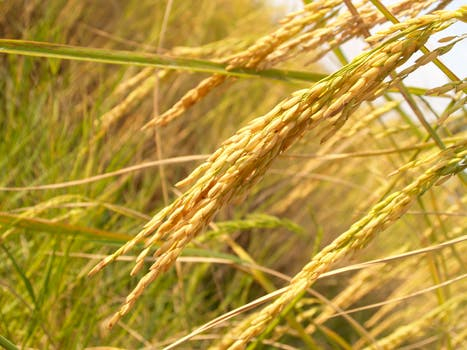 The drying of rice is done quite differently from the drying of most whole grains. Drying is typically done in multiple passes with the emphasis being on reducing moisture while keeping the paddy temperature below a point which might cause breakage. This limits the range of control actions that can be taken but it means that continuously measuring paddy temperature and moisture at intermediate points in the process is extremely important so that any anomalies can be quickly noted and adjusted for.
The drying of rice is done quite differently from the drying of most whole grains. Drying is typically done in multiple passes with the emphasis being on reducing moisture while keeping the paddy temperature below a point which might cause breakage. This limits the range of control actions that can be taken but it means that continuously measuring paddy temperature and moisture at intermediate points in the process is extremely important so that any anomalies can be quickly noted and adjusted for.
One of our South American customers installed several Dryer Master moisture sensors, one at the exit to each dryer, in a series of dryers in the drying process. The sensors feed their continuous moisture and temperature information to a plant wide automation system. This enabled the customer to add new additional real time information from multiple points in the process and then use this information to develop their own overall control system for the full process.
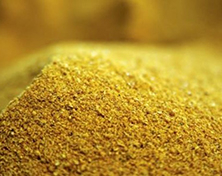 At Dryer Master we often encounter process operations where the process itself does not present major moisture control issues. However, in many of these situations the production facilities still find that they can achieve substantial benefits from adding real-time moisture measurement and monitoring to their process information system.
At Dryer Master we often encounter process operations where the process itself does not present major moisture control issues. However, in many of these situations the production facilities still find that they can achieve substantial benefits from adding real-time moisture measurement and monitoring to their process information system.
Dryer Master worked with a distiller that dried spent grain in a rotary dryer down to a 12% level for use as feed. The client saw that by adding an in-line moisture sensor to the process they were able to conveniently and continuously monitor the outlet moisture from the dryer in real time. They also discovered that this enabled them to significantly reduce the amount of manual sampling that was required, thereby freeing up valuable operator resources.
Dryer Master's cost effective stainless steel moisture sensors can be installed at one or more points in the process. They can then send the real time moisture information either linked to a plant PLC, or to a separate Dryer Master display unit (that can also provide inputs to a plant wide system if required).
 Dryer Master moisture measurement and control technologies have multiple applications in the food industry, where tight control of moisture levels can have a direct impact on the quality of the product. We custom engineered this system to automate and improve a coffee bean quenching process, helping the customer maintain consistent quality in their end product.
Dryer Master moisture measurement and control technologies have multiple applications in the food industry, where tight control of moisture levels can have a direct impact on the quality of the product. We custom engineered this system to automate and improve a coffee bean quenching process, helping the customer maintain consistent quality in their end product.
During the roasting process, free moisture in coffee beans evaporates while their internal moisture heats and expands, causing them to crack open and develop their flavor. Once the proper light, medium, or dark roast has been achieved a quenching process is triggered to maintain the desired coffee flavor by preventing the beans from heating any further.
To automate the process, our engineering team supplied food-grade stainless steel moisture sensors and networked them into a PLC-based control system. They also engineered a spray system to deliver the precise amount of water to evaporate off the beans and cool them to the desired temperature.
The ability to precisely measure and control moisture gave this coffee processor the ability to achieve consistent results and to realize their quality objectives.
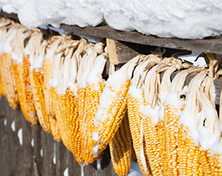 At the northern and southern extremes of the corn belt there are areas where harvest and drying conditions can be quite different from those in the heart of the corn belt. There are even some parts of the world where harvested corn may not be dried until well into the winter, by which time outside temperatures may have plunged well below the freezing mark.
At the northern and southern extremes of the corn belt there are areas where harvest and drying conditions can be quite different from those in the heart of the corn belt. There are even some parts of the world where harvested corn may not be dried until well into the winter, by which time outside temperatures may have plunged well below the freezing mark.
A prospective client approached us looking for a drying control system that could withstand the rigors of the depths of winter. In their location corn was not removed from the cob until after the kernels had frozen. This meant that the control system itself (including the moisture sensors) had to be able to operate at temperatures as low as -20C, and still be able to control the drying of the frozen corn kernels being removed from storage.
Dryer Master engineered and delivered a modified DM510 controller that passed the client's tests with flying colors. This has since led to more than 100 of the systems being installed in newly constructed grain elevators.
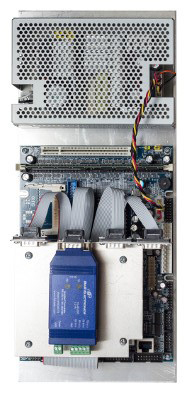 In the grain industry the typical Dryer Master installation includes 2 in-line moisture sensors and a separate control panel to interface with the grain dryer motor speed control. A few years ago, a major dryer manufacturer approached us with the concept of adding Dryer Master control to their dryers as an integrated option/feature, so that all dryer operation, including moisture control, could take place from one dryer control panel.
In the grain industry the typical Dryer Master installation includes 2 in-line moisture sensors and a separate control panel to interface with the grain dryer motor speed control. A few years ago, a major dryer manufacturer approached us with the concept of adding Dryer Master control to their dryers as an integrated option/feature, so that all dryer operation, including moisture control, could take place from one dryer control panel.
Dryer Master engineers worked with the client to supply a modified version of the DM510. The result was a compact DM510e module that could be included within the dryer panel and that allowed the operator to operate the dryer and access full Dryer Master functionality, all from one user interface.
Although there was some upfront integration work to be done by the dryer manufacturer, this was far less effort than having to try and develop a drying control system from scratch. To date the approach has been adopted by a number of leading grain dryer manufacturers who now benefit from being able to include Dryer Master's proven control technology as a selling feature on their dryers, at a very reasonable price point.